Use this nursing care plan and management guide to help care for patients with osteoarthritis. Enhance your understanding of nursing assessment, interventions, goals, and nursing diagnosis, all specifically tailored to address the unique needs of individuals with osteoarthritis This guide equips you with the necessary information to provide effective and specialized care to patients dealing with osteoarthritis.
What is Osteoarthritis?
Osteoarthritis (OA) also known as a degenerative joint disease (DJD) or osteoarthrosis is the most common kind of arthritis associated with progressive degeneration of articular cartilage in synovial joints. Usually, weight-bearing joints (knees, hips, feet) and the spine are affected.
Although the disease occurs most often in older adults, osteoarthritis is not part of the normal aging process. Idiopathic (primary) OA is more likely to affect women older than age 65. People with this type of OA no usually have a family history of the disorder but no direct history of joint disease or injury. Secondary OA occurs more often in men. People with this type of OA are likely to have a previous inflammatory disease and joint injury related to the person’s occupation or sports activity.
Osteoarthritis is characterized by progressive degeneration of the cartilage in a joint. The changes in articular cartilage represent an imbalance between lysosomal enzyme destruction and chondrocyte production of the cartilage matrix. This imbalance leads to an inability of the cartilage to withstand the normal weight-bearing stress in the joint.
Cartilage becomes thin, rough, and uneven, with areas that soften eventually allowing bone ends to come closer together. Micro fragments of the cartilage may float about freely within the joint space, initiating an inflammatory process. True to the progressive nature of the disease, the cartilage continues to degenerate, and bone spurs called osteophytes develop at the margins and at the attachment sites of the tendons and ligaments. Over time these changes have an effect on the mobility and size of the joint. As joint cartilage becomes fissured, synovial fluid leaks out of the subchondral bone, and cysts develop on the bone.
Nursing Care Plans and Management
The nursing care planning goals for patients with osteoarthritis typically include relieving pain and improving joint mobility, enhancing physical functioning and independence, and providing education and support for self-management strategies to promote long-term disease management.
Nursing Problem Priorities
The following are the nursing priorities for patients with osteoarthritis:
- Manage pain
- Enhance joint mobility and physical functioning
- Provide education on self-care strategies
- Promote independence and self-management skills
- Collaborate with the other healthcare team
Nursing Assessment
Assess for the following subjective and objective data:
- Joint pain worsens with movement or activity.
- Joint stiffness, especially in the morning
- Joint swelling and tenderness
- Limited range of motion
- Joint instability
- A grating or crackling sound or sensation in the joint during movement (crepitus)
- Muscle weakness
- Bone deformities
- Physical mobility
Assess for factors related to the cause of osteoarthritis:
- Pain
- Bone deformities
- Joint degeneration
- Muscle spasm
- Physical mobility
- Fatigue
- Muscle weakness
- Restricted joint movement
- Stiffness
Nursing Diagnosis
Following a thorough assessment, a nursing diagnosis is formulated to specifically address the challenges associated with osteoarthritis based on the nurse’s clinical judgement and understanding of the patient’s unique health condition. While nursing diagnoses serve as a framework for organizing care, their usefulness may vary in different clinical situations. In real-life clinical settings, it is important to note that the use of specific nursing diagnostic labels may not be as prominent or commonly utilized as other components of the care plan. It is ultimately the nurse’s clinical expertise and judgment that shape the care plan to meet the unique needs of each patient, prioritizing their health concerns and priorities.
Nursing Goals
Goals and expected outcomes may include:
- The client will report satisfactory pain control at a level of less than 3 to 4 on a scale of 0 to 10.
- The client will use pharmacological and nonpharmacological pain relief strategies.
- The client will exhibit increased comfort such as baseline levels for HR, BP, respiration, and relaxed muscle tone or body posture.
- The client will engage in desired activities without an increase in pain level.
- The client will perform physical activity independently or within limits of activity restrictions.
- The client will demonstrate the use of adaptive changes that promote ambulation and transferring.
- The client will be free of complications of immobility, as evidenced by intact skin, absence of thrombophlebitis, normal bowel pattern, and clear breath sounds.
- The client will use identified techniques to enhance activity intolerance.
- The client will report a measurable increase in activity intolerance.
- The client will be free of injuries.
- The client will identify measures to prevent injury.
- The client will verbalize increased confidence in the ability to deal with illness, changes in lifestyle, and possible limitations.
- The client will formulate realistic goals and plans for the future.
- The client will identify feelings and methods for coping with negative perceptions of self.
- The client will demonstrate initial adaptation to body changes as evidenced by participating in self-care activities and positive interactions with others.
Nursing Interventions and Actions
Therapeutic interventions and nursing actions for patients with osteoarthritis may include:
1. Managing and Reliving Acute and Chronic Pain
Clients with osteoarthritis experience acute pain due to the degeneration of the protective cartilage in their joints, which results in bone-on-bone friction during movement. This friction causes inflammation and irritation of the joint, leading to the sensation of pain. Pain is usually the initial source of morbidity in osteoarthritis, with the disease’s primary symptom being deep, achy joint pain exacerbated by extensive use (Lozada & Diamond, 2022).
Assess the client’s description of pain.
The client may report pain in the fingers, hips, knees, lower lumbar spine, and cervical vertebrae. Pain is usually provoked by activity and relieved by rest; joint pain and aching may also be present when the client is at rest. Pain may manifest as an ache, progressing to sharp pain when the affected area is brought to full weight-bearing or a full range of motion (ROM). The client may experience sharp, painful muscle spasms and paresthesias. Joints may become unstable as OA progresses. As a result, the pain may become more prominent and may not respond to medications (Lozada & Diamond, 2022).
Assess the client’s previous experiences with pain and pain relief.
The client may have a tried-and-true plan to implement when OA becomes exacerbated. Consideration should be given to implementing this plan, with modifications if necessary, when the pain becomes acute. In those clients in whom the disease progresses, pain is more continuous and begins to affect activities of daily living, eventually causing severe limitations in function (Dreyer, 2023).
Identify factors or activities that seem to precipitate acute episodes or aggravate a chronic condition.
Pain may be associated with specific movements, especially repetitive movements of the involved joints. The daily stresses applied to the joints especially the weight-bearing joints play an important role in the development of osteoarthritis. With advancing age also comes reductions in cartilage volume, proteoglycan content, cartilage vascularization, and cartilage perfusion (Lozada & Diamond, 2022).
Determine whether the client is reporting all of the pain the patient is experiencing.
Clients who have become accustomed to living with chronic pain may learn to tolerate basal levels of discomfort and only reports those discomforts that exceed these “normal” levels. The care provider is not getting an accurate picture of the client’s status if this pain is not reported. The nurse may need to be sensitive to nonverbal cues that pain is present.
Determine the client’s emotional reaction to chronic pain.
The client may find coping with a progressive, debilitating disease difficult. Pain is the most common and debilitating symptom experienced by clients diagnosed with OA, and difficulty coping with pain has been associated with increased pain severity and greater emotional distress, muscle and joint tenderness, and pain-related disability, as well as poorer outcomes from treatment (Lawford et al., 2019).
Assess the client’s weight and body mass index (BMI).
Obesity increases the mechanical stress in a weight-bearing joint. It has been strongly linked to osteoarthritis of the knees and, to a lesser extent, of the hips. A study that evaluated the associations between BMI over 14 years and knee pain at year 15 in women found that a higher BMI at year 1 and a significant increase in BMI over 15 years were predictors of bilateral knee pain at year 15 (Lozada & Diamond, 2022).
Develop a pain relief regimen based on the client’s identified aggravating and relieving factors. Instruct the client to do the following:
- Apply a hot or cold pack.
Heat reduces pain through improved blood flow to the area and through the reduction of pain reflexes. Special attention needs to be given to preventing burns with this intervention. Cold reduces pain, inflammation, and muscle spasticity by decreasing the release of pain-inducing chemicals and slowing the conduction of pain impulses. These interventions require no special equipment and can be cost-effective. Hot or cold applications should last about 20 to 30 minutes per hour. - Change positions frequently while maintaining functional alignment.
Muscle spasms may result from poor body alignment, resulting in increased discomfort. Aggravated stress to the affected joint may be avoided by implementing corrective procedures if the client has poor posture (Lozada & Diamond, 2022). - Eliminate additional stressors.
Chronic pain takes an enormous emotional toll on clients. Reducing other factors that cause stress may make it possible for the client to have more significant reserves of emotional energy for effective coping. Persistent symptoms of OA such as pain, stiffness, and fatigue may cause limitations in daily responsibilities and activities, negative feelings or thoughts, and financial burdens to clients, which in turn have significant impacts on their psychological and relational well-being (Zhaoyang et al., 2018). - Medicate for pain before activity and exercise therapy.
Exercise is necessary to maintain joint mobility, but clients may be reluctant to participate in exercise if they are in too much pain. The goals of pharmacotherapy are to reduce morbidity and prevent complications. Pay careful attention to a particular pharmacologic regimen’s adverse-event profile (Lozada & Diamond, 2022). - Provide adequate rest periods and assist with developing coping skills.
Fatigue impairs the ability to cope with discomfort. Pain coping skills training (PCST) helps the client reconceptualize how thoughts, feelings, and behaviors influence pain and systematically trains them in skills such as relaxation, and the use of positive coping thoughts to reduce pain catastrophizing (Lawford et al., 2019). - Support joints in a slightly flexed position through the use of pillows, rolls, and towels. Splint arthritic joints as appropriate.
Flexion of the joints may reduce muscle spasms and other discomforts. In a study of clients with painful and deforming hand osteoarthritis, rigid, custom splints worn nightly on one arthritis finger joint per client for three months significantly reduced pain in 74% of clients. Average pain remained significantly lower in splinted joints compared with non-splinted joints three months after clients stopped using the splints (Lozada & Diamond, 2022). - Use adaptive equipment (such as a cane, or walker), as indicated.
These aids assist in ambulation and reduce joint stress. Braces may also be of some. A cane can be used in the contralateral hand for hip or knee OA. The ACR/Arthritis Foundation recommends hand orthoses for clients with OA of the first carpometacarpal joint and conditionally recommends hand orthoses for clients with OA in other joints of the hand (Lozada & Diamond, 2022).
Instruct the client to take prescribed analgesics and/or anti-inflammatory medications and provide instruction on important side effects.
See Pharmacological Management
Encourage the client to engage in physical activities regularly.
Although people with OA tend to avoid activity, exercise is an effective treatment for this condition, producing improvements in pain, physical function, and walking distance. The importance of aerobic conditioning, particularly low-impact exercises, should be stressed as well. Swimming, especially the aerobic aquatic programs developed by the Arthritis Foundation, can be helpful (Lozada & Diamond, 2022).
Provide information about the effects of Tai chi on joint pain.
Practicing Tai Chi not only improves discomfort in clients affected by OA that causes joint pain but also helps prevent and delay its appearance in healthy clients. Tai chi combines easy exercises to learn (Osteoarthritis Foundation International, 2022). A prospective, single-blind, randomized, controlled study suggested that Tai chi is a potentially effective treatment for pain associated with OA of the knee (Lozada & Diamond, 2022).
Promote the use of appropriate footwear.
For knee osteoarthritis, guidelines recommend appropriate footwear as part of self-management. A randomized trial comparing shoes designed to unload the knee versus new conventional shoes found that both groups showed comparable improvement in pain with walking and other benefits (Lozada & Diamond, 2022).
Emphasize the importance of communicating the extent of pain felt.
Communicating the extent of pain may facilitate the client’s own psychological well-being by allowing them to free their mind of unwanted thoughts, desensitize upsetting events and improve connections with relationship significant others. One partner’s disclosure may also facilitate the other partner’s psychological adjustment by reducing social constraints on disclosure and facilitating cognitive processing (Zhaoyang et al., 2018).
Promote the use of acupuncture for pain relief.
Acupuncture is becoming a more frequently used option for the treatment of the pain and physical dysfunction associated with osteoarthritis. A review article of randomized, controlled trials reported that the level of pain persisting after acupuncture was significantly lower than the level of pain persisting after control treatments. The American Academy of Orthopaedic Surgeons offers limited support, stating that acupuncture may improve pain and function in clients with knee OA (Lozada & Diamond, 2022).
Encourage the obese client to reduce weight.
Weight reduction relieves stress on the affected knees or hips. The benefits of weight loss, whether obtained through regular exercise and diet or through surgical intervention, may extend not only to symptom relief but also to a slowing in cartilage loss in weight-bearing joints. Additionally, weight loss lowers levels of the inflammatory cytokines and adipokines that may play a role in cartilage degradation (Lozada & Diamond, 2022).
2. Enhancing Physical Mobility
Clients with osteoarthritis experience impaired physical mobility due to the stiffness and pain in their affected joints, which limits their ability to perform activities of daily living and engage in physical activity. This can lead to decreased muscle strength and increased risk of falls, further exacerbating their mobility issues. Synovitis and erosion of the joint occur due to the enlarging bony spurs in the eroded cartilage. The thickening joint capsule adheres to the bone, leading to movement limitations. According to the United Nations, 40 million individuals will be severely disabled with OA, with over 80% of adults aged 60 and older having limitations in movement (Saccomano, 2018).
Assess the client’s posture and gait.
It is important to assess for indicators of a decreased ability to ambulate and move purposefully: shorter steps, making gait appear unstable; uneven weight-bearing; an observable limp; or rounding of the back or hunching of the shoulders. Early in the disease process, the joints may appear normal. However, the client’s gait may be antalgic if weight-bearing joints are involved (Lozada & Diamond, 2022).
Assess the client’s weight.
Excessive weight may add stress to painful joints. In addition to its mechanical effects, obesity may be an inflammatory risk factor for osteoarthritis. Obesity is associated with increased levels of adipokines, which may promote chronic, low-grade inflammation in joints (Lozada & Diamond, 2022).
Assess the range of motion (ROM) in all joints, comparing passive and active ROM.
Pain or joint deformity may cause a progressive loss of ROM. insult to the joints may occur even in the absence of obvious trauma. Crepitus, limited ROM, and painful joints will be present as the joint is moved through ROM. Joint palpitation can reveal joint tenderness, intr-articular effusions, and synovial thickening. Crepitus is more pronounced in active than in passive ROM (Saccomano, 2018).
Assess the client’s ability to perform ADLs. Determine what adaptive measures the client has already taken to be able to perform self-care measures.
Joint deformity, especially in the hands, that occurs with OA may limit certain self-care activities by the client. A spouse may assist in buttoning the clothes or picking up dropped objects. The client may have had the assistive device installed in the shower or near the toilet (handlebars, raised toilet seat). This information gives the nurse a sense of the measures the client has had to take to remain functional.
Assess the client’s comfort with and knowledge of how to use assistive devices.
The correct use of assistive devices for ambulation can improve mobility and reduce the risk of falls. Some clients refuse to use assistive devices because they attract attention to their disability. The Journal of Orthopaedic & Sports Physical Therapy recommended that the clinician should provide impairment-based functional, gait, and balance training, including the proper use of assistive devices such as canes, crutches, and walkers to clients with hip OA and activity limitations, balance impairment, and/or gait limitations (Cibulka et al., 2017).
Assess the client’s vital signs after physical activity.
Elevations in HR, respiratory rate, and BP may be a function of increased effort and discomfort during the performance of tasks. The client can usually resume activities after a period of rest; however, in later stages, pain can be an ongoing complaint despite adequate rest (Saccomano, 2018).
Encourage the client to increase activity as indicated.
Increasing activity at home can be effective in maintaining joint function and independence. A balance must exist between the client performing enough activity to keep joints mobile and not taxing the joint too much. Exercise goals are to decrease pain, improve ROM, increase muscle strength, and improve activities of daily living. Isometric exercise is the exercise of choice, as it puts less stress on the joint (Saccomano, 2018).
Instruct the client on how to perform isometric, and active and passive ROM exercises to all extremities.
Muscular exertion through exercise promotes circulation and free joint mobility, strengthens muscle tone, develops coordination, and prevents nonfunctional contracture. Evidence suggests that pacing activities, exercise, and weight reduction are all measures to promote healthy joints. Therefore, the client should incorporate daily exercise into their routine. Cycling, swimming, and elliptical training are some of the recommended exercises as long as the client tolerates them (Saccomano, 2018).
Discuss the environmental barriers to mobility.
It may no longer be reasonable for the client to continue to live in a home or apartment with multiple flights or stairs or continue to try to take care of a large home. If the client is using a cane or walker, carpets must be tacked down or removed. Items that are used often should be kept within reach. The client can also be taught joint protection and energy-conservation techniques (Lozada & Diamond, 2022).
Encourage sitting in a chair with a raised seat and firm support.
This adaptive technique facilitates getting in and out of the chair safely. Proper balance is essential to perform the stand-to-sit task and prevent high-impact forces during seat contact that would lead to increased impact on the spine. Thus, the importance of achieving movement control during the stand-to-sit task should not be underestimated for clients with knee OA (Fu et al., 2021).
Encourage the client to ambulate with assistive devices (such as a cane, crutches, and walker).
Using mobility aids reduces the load on the joint and promotes safety. The use of assistive devices for ambulation and for activities of daily living may also be indicated for clients with OA. A cane can be used in the contralateral hand for hip or knee OA. In a randomized study, wearing a slip-on knee brace reduced pain and bone marrow lesions (Lozada & Diamond, 2022).
Encourage the client to rest in between activities that are tiring. Suggest strategies for getting out of bed, rising from chairs, and picking up objects from the floor to conserve energy.
Rest periods are necessary to conserve energy. The client must learn to respect the limitations of his or her joints; pushing beyond the joint of pain will only increase the stress on the joint. The client needs to recognize and accept the limitations of his or her joints. Rushing is likely to be frustrating and self-defeating and may result in unsafe conditions for the client.
Provide the client with access to and support during weight-reduction programs.
Weight reduction results in decreased trauma to bones, muscles, and joints. In addition to exercise interventions, clinicians should collaborate with healthcare providers, nutritionists, or dietitians to support weight reduction in clients with hip OA who are overweight or obese. Researchers investigated the effect of exercise and dietary guidance for weight loss on function in a cohort study with hip OA. significant decreases in body mass and body fat were found at eight months. The pain subscale score also decreased, and walking distance on a six-minute walk test improved by 11.6% (Cibulka et al., 2017).
Consult physical and occupational therapy staff to prescribe an exercise program.
The physical therapist can help the client to promote muscle strength and joint mobility and therapies to promote the relaxation of tense muscles. These interventions also may contribute to effective pain management. Occupational adjustments may also be necessary for some clients with OA. An occupational therapist can assist with evaluating how well the client performs ADLs, as well as with retraining the client as necessary (Lozada & Diamond, 2022).
Suggest a referral to community resources such as the Arthritis Foundation.
Community resources can provide the client with peer support and additional information about resources (e.g., assistive devices). Clients with Medicare Advantage or Medicare Supplemental Health plans receive automatic membership in “Silver Sneakers”, which is available at most gyms or fitness centers and includes a variety of fitness modalities. Available programs include stretching, relaxation, strength training, and yoga. Some facilities may have water activities as well as cardiovascular fitness (Saccomano, 2018).
Provide information about complementary approaches, such as yoga and Tai Chi.
Yoga positions or poses are generally harmless, but clients should exercise caution not to hyperextend affected joints. Yoga can also reduce anxiety and stress, which can be a challenge for some clients with OA. Tai chi, a series of slow, meditative movements, can improve balance in clients who are at risk of falls due to weakness and instability of the knee (Saccomano, 2018).
Prepare the client for an ultrasound of the hip if diagnosed with hip OA.
Clinicians may use ultrasound in addition to exercise and hot packs in the short-term management of pain and activity limitation in clients with hip OA. A study exploring the effects of ultrasound in clients with primary hip OA showed significant improvement in pain intensity and 15-minute timed walk after ten treatments. Short-term pain reduction may help the client’s mobility and improve their daily function (Cibulka et al., 2017).
Prepare the client for manual therapy.
The nurse may help assist the client with mild to moderate hip OA and impairment of joint mobility and flexibility during manual therapy. Manual therapy may include thrust, non-thrust, and soft tissue mobilization. Doses and duration may range from one to three times per week over six to 12 weeks in clients with mild to moderate OA (Cibulka et al., 2017).
3. Promoting Tolerance to Activity
Clients with osteoarthritis (OA) experience activity intolerance due to the pain and stiffness in their joints, which limits their ability to engage in physical activity and perform activities of daily living. They also often experience pain during functional activities such as walking, crouching, and climbing stairs. This can result in decreased endurance and increased fatigue, further exacerbating their activity intolerance (Overton et al., 2023).
Assess the physical activity level and mobility of the client.
This provides baseline information for formulating nursing goals during goal setting. To assess activity limitation, participation restrictions, and changes in the client’s level of function over the episode of care reliable and valid physical performance measures such as the 6-minute walk test, 30-second chair stand, stair measure, timed up-and-go test, self-paced walk, timed single-leg stance, 40square step test, and step test may be utilized (Cibulka et al., 2017).
Assess the client’s nutritional status.
Adequate energy reserves are needed during activity. Additionally, effective dietary interventions are needed for successful weight reduction in overweight or obese clients with OA to reduce joint impact and injurious loading. An aging population and the current obesity epidemic predict an increased global burden of OA. therefore, any risk-free means of reducing progression or relieving debilitating symptoms should be given a try (Thomas et al., 2018).
Assess the need for ambulation aids (e.g., cane, walker) for ADLs.
Assistive devices enhance the mobility of the client by helping him overcome limitations. Severe pain is not reported in the early onset of the disease; however, minimal physical activity and even rest can cause pain as OA progresses. Additional late symptoms include muscle wasting or weakness, particularly in the quadriceps muscle; bowing of knees and knock-knees can also be present (Saccomano, 2018).
Assess the client’s gait pattern.
The client may attempt to address their symptoms by changing their gait pattern and may assume an unsteady gait in order to prevent pain, in turn causing limping. In addition, a reduction in internal and external rotation of the hip may be seen. Clients may complain of the inability to change positions or gait instability when the hips are affected (Saccomano, 2018).
Assist with ADLs while avoiding client dependency.
Assisting the client with ADLs allows for the conservation of energy. Carefully balance the provision of assistance; facilitating progressive endurance will ultimately enhance the client’s activity tolerance and self-esteem. It is necessary to educate the client on the promotion of self-care interventions (Saccomano, 2018).
Encourage active ROM exercises. Encourage the client to participate in planning activities that gradually build endurance.
Exercise maintains muscle strength, joint ROM, and exercise tolerance. Physical inactive clients need to improve functional capacity through repetitive exercises over a long period of time. Strength training is valuable in enhancing the endurance of many ADLs. Clinicians should use individualized flexibility, strengthening, and endurance exercises to address impairments in the hip range of motion, specific muscle weaknesses, and limited thigh (hip) muscle flexibility (Cibulka et al., 2017).
Provide or assist in functional, gait, and balance training.
Functional gait and balance training, including the use of assistive devices such as canes, crutches, and walkers, can be used in clients with hip OA to improve function associated with weight-bearing activities. The clinician should also individualize the prescription of therapeutic activities based on the client’s values, daily life participation, and functional activity needs (Cibulka et al., 2017).
Promote participation in acupuncture as indicated.
Acupuncture uses needles at specific anatomical body points to provide local anesthesia or pain relief. It has been known to reduce pain intensity, increase functional ability, and increase the quality of life in clients with OA (Saccomano, 2018).
Apply hot or cold compresses on affected joints.
Applications of heat and cold can be beneficial in reducing pain. It is necessary to use ultrasound therapy to reach deeper tissues to alleviate pain. Furthermore, applications of cold are helpful after strenuous exercise or activity to reduce pain and muscle spasms (Saccomano, 2018).
Administer topical capsaicin as prescribed.
Topical capsaicin is an alternative treatment to topical NSAIDs. Capsaicin is the ingredient that causes the burning sensation from eating chili peppers. Topical capsaicin interrupts pain transmission signals by providing pain relief for OA clients. The American College of Rheumatology guidelines supported the conditional use of topical capsaicin for OA of the hand (Saccomano, 2018).
Provide the appropriate dietary lipids necessary for the client.
With excess adiposity appearing to underlie the metabolic factors now recognized as being integral to OA, particularly of the hand and knee, dietary modifications to achieve weight reduction where appropriate, together with increased physical activity, are the strongest evidence-based recommendations. Reducing the intake of n-6 fatty acids by substituting oils rich in unsaturated such as grapeseed, canola, and olive oils, increasing in intake of oily fish, and a standard daily supplement of fish oil are beneficial in the modification of dietary lipids.
Administer vitamin-rich foods and supplements as indicated.
To achieve adequate levels of vitamins A, C, and E, the nurse should ensure adequate daily intake through the consumption of rich dietary sources for vitamins A, C, and E. Only consider a multivitamin supplement if the dietary intake of these nutrients is insufficient to meet dietary recommendations. Reactive oxygen and nitrogen species may be involved in the pathophysiology of OA, therefore, suppressing these with antioxidants might delay its onset and progression (Thomas et al., 2018).
Provide adequate sources of vitamin D.
Inadequate vitamin D status is thought to impair the ability of the bone to respond to the pathophysiological process of OA and influence disease progression. Therefore, the client should increase the consumption of vitamin D-rich foods, such as oily fish, egg yolks, vitamin D-fortified spreads, fortified milk, and cereals (Thomas et al., 2018).
Assist during surgical procedures such as osteotomy and arthroplasty.
Osteotomy is used in active clients younger than 60 years who have a malaligned hip or knee joint and want to continue with reasonable physical activity. The principle underlying this procedure is to shift weight from the damaged cartilage on the medial aspect of the knee to the healthy lateral aspect of the knee. Arthroplasty consists of the surgical removal of the joint surface and the insertion of a metal and plastic prosthesis. This is performed if all other modalities are ineffective and osteotomy is not appropriate or if a client cannot perform ADLs despite maximal therapy. This procedure alleviates pain and may improve function (Lozada & Diamond, 2022).
4. Preventing Risk for Injury and Trauma
Clients with osteoarthritis are at risk for injury due to decreased physical mobility and increased pain and stiffness in their affected joints, which can lead to falls and accidents. Additionally, the use of pain medications and other treatments for osteoarthritis can also increase the risk of adverse effects and further injury. Clients with OA also often have comorbid conditions, such as obesity, sleep apnea, and depression; paying attention to these comorbidities is essential to ensure a better quality of life (Saccomano, 2018).
Assess the client’s mobility, gait, and balance.
Clients with osteoarthritis may experience difficulty in movement and coordination due to joint inflammation, cartilage damage, and muscle weakness. This can make it difficult for clients to move the affected joint or use it in a coordinated way resulting which may result in falls and other injuries. Gait evaluation is necessary to observe for any gait disturbances related to OA of the hip and knee. Stiff knees may be present on physical exams (Saccomano, 2018).
Assess the client’s ability to perform activities of daily living (ADLs) and instrumental activities of daily living (IADLs).
This is to identify areas where the client may be at risk of injury and develop interventions and provide additional support to prevent falls and other accidents. Activity-related pain measures, such as Movement-evoked Pain (MEP) and Sensitivity to Physical Activity (SPA) have been used to capture information on distinct aspects of activity-related pain (Overton et al., 2023).
Evaluate the client’s home environment for potential hazards such as loose rugs, poor lighting, and wobbly furniture.
These are potential home hazards that can increase the risk of falls, especially for clients with osteoarthritis with mobility or balance issues. Components of physical performance, such as impaired balance and muscle weakness, were also identified as risk factors for falls in clinical knee OA in a recent systematic review (van Schoor et al., 2020).
Identify medications that may contribute to the risk of falls.
Pain is one of the key symptoms of OA, which may prompt the frequent prescription of analgesics. The use of analgesics, especially opioids, has been related to an increased risk of falls, and therefore, the mediating effects of the use of analgesics and opioids may need to be assessed (van Schoor et al., 2020).
Assist the client with active and passive ROM exercises and isometrics as tolerated.
This maintains and enhances muscle strength, joint function, and endurance. Physical therapy and OA referrals are recommended to develop a nonpharmacologic approach to treatment to improve muscle strength, maintain ROM, and increase functional ability. Exercise goals are to decrease pain, improve ROM, increase muscle strength, and improve activities of daily living (Saccomano, 2018).
Encourage the client to lose weight to decrease stress on weight-bearing joints.
Excess weight adds extra stress to the joints, which can accelerate joint cartilage deterioration. Evidence suggests that pacing activities, exercise, and weight reduction are all measures to promote healthy joints. A 5% weight loss can reduce the stress on joints which can improve function and decrease pain and disability (Saccomano, 2018).
Use a buffer bed and position the bed low when sleeping.
This will reduce possible injury from falling during sleep. Stiffness and poor mobility in the joints make clients change the way they move. Each time a step is taken, they bear about 80% of their body weight on a single limb. This leads to the client compensating for joint damage by shortening their stride or widening their step, practices that impair their balance (Arthritis Foundation, 2022).
Instruct the use of adaptive mobility equipment such as walkers, canes, and crutches as indicated.
This will keep the joints mobile, promote safety, and maintain a high quality of life. Studies about wearing a weight-supported walking assist device confirm that the body weight load on the knee joint of the lower limb wearing the device was reduced to one-third less of the weight of the wearer during walking (Tomai et al., 2019).
Instruct the client regarding safety measures:
- Raised chairs and toilet seats
These can help to reduce pressure and stress on the joints, which can help to relieve pain and discomfort. The client may need the highest chair they could get, but they must ensure that they can still place their feet flat on the floor when sitting in it, as this will stop their legs from dangling uncomfortably. A chair raiser may also be considered if the available chair is not enough. These raised seats will make it easier for the client to sit down and get up (Versus Arthritis, 2018). - Use of handrails
A lack of handrails or grab bars can make it difficult to maintain balance and support when walking or standing up. According to the American College of Rheumatology, clinical osteoarthritis is defined by pain in combination with other symptoms, such as stiffness. As a consequence of these symptoms, persons with OA may have impaired physical function and consequently, an increased fall risk (van Schoor et al., 2020). - Accurate use of mobility equipment and wheelchair safety.
Accurate use of mobility equipment involves proper fitting and adjustment, as well as appropriate use and maintenance of the device. This can help to ensure that the device provides the necessary support and stability for the client and minimizes the risk of injuries.
Recommend self-management programs.
Self-management education workshops are interactive community-based programs that teach participants skills for managing arthritis or other chronic diseases. The Chronic Disease Self-Management Program (CDSMP) is an effective self-management education workshop for people with chronic health problems including arthritis. Participants demonstrated significant improvements in exercise, ability to do social and household activities, less depression, fear, frustration or worry about health, reduction in symptoms like pain, and increased confidence in their ability to manage their condition (Lorig, 2020).
Provide information about weight support devices.
In order to unload the weight on the knee during walking, it is necessary to support the amount of unloaded body weight by another place on the body. A study used a seat similar to a saddle on a bicycle to unload the weight on the knee by supporting partial body weight with the pelvis instead of the lower limb. This study confirmed that by wearing the weight-supported walking assist device, the body weight load on the knee joint of the lower limb wearing the device can be reduced to one-third or less of the weight of the wearer during walking (Tomai et al., 2
5. Enhancing Self Body Image and Self-Esteem
Clients who had been in treatment for arthritis for longer than five years had physical changes in their hands and body, had problems walking, and/or had significant changes in family and working life are more likely to see a decline in their self-esteem and body satisfaction. It is important not to ignore this aspect of OA because this may ultimately lead to depression and other mental health issues (Andersen, 2020).
Assess for withdrawn behavior, use of denial, or overconcern with body and changes.
This may suggest emotional exhaustion or maladaptive coping methods, requiring more in-depth intervention and psychological support. Chronic diseases such as OA often cause concern and stress to clients and their spouses, and thus affect both partners’ individual and relational well-being. However, both clients and spouses often face a number of barriers that cause them to hold back from disclosing their concerns to their partners (Zhaoyang et al., 2018).
Assess the level of the client’s knowledge about their condition and treatment related to the current situation.
This identifies the extent of the problem or concern and necessary interventions. The impact of knee OA can be profound on self-esteem, it limits daily activity, causes a feeling of loss, and decreases work productivity. These effects could be mitigated if the health services provided more information on the disease and on how to manage it self-efficiently (Carmona-Teres et al., 2017).
Determine the client’s role in the family and the client’s perception of expectation of self and others.
Long-term and permanent illness or disability alters the client’s ability to fulfill the usual role(s) in family and work settings. Unrealistic expectations can undermine self-esteem and affect the outcome of illness. Persistent symptoms of OA such as pain, stiffness, and fatigue may cause limitations in daily responsibilities and activities and a financial burden to clients (Zhaoyang et al., 2018).
Encourage verbalization about concerns about the disease process and future expectations.
This provides an opportunity to identify fears and misconceptions and deal with them directly. One important strategy for coping with the challenges caused by chronic diseases is to communicate one’s illness-related concerns effectively. The disclosure provides opportunities for people to understand and validate their partner’s thoughts and feelings and support each other’s needs, thereby increasing intimacy and relationship satisfaction (Zhaoyang et al., 2018).
Discuss the meaning of loss or change to the client and the family.
Identifying how illness affects the perception of self and interactions with others will determine the need for further intervention or counseling. According to the Lazarus Stress Model, when faced with a potentially stressful event, people respond with different levels of stress and emotions. Emotions depend on how the person evaluates the situation and which behaviors and thoughts they use to manage this situation (Carmona-Teres et al., 2017).
Discuss the client’s perception of how their significant other perceive limitations.
Verbal and nonverbal cues from SO may have a major impact on how the client views themselves. Spouses may withhold discussing their concerns to protect the client’s feelings, avoid under- or overestimating the client’s pain, or because they are uncertain of how to be supportive. Holding back is associated with higher levels of psychological disability and catastrophizing for clients with OA and more caregiver strain for spouses (Zhaoyang et al., 2018).
Acknowledge and accept feelings of grief, hostility, and dependency.
Constant pain is wearing, and feelings of anger and hostility are common. Acceptance provides feedback that feelings are normal. It is widely believed that disclosure may facilitate an individual’s own psychological well-being by allowing them to free their mind of unwanted thoughts, desensitize upsetting events, and improve connections with relationship partners. One partner’s disclosure may also facilitate the other partner’s psychological adjustment by reducing social constraints on disclosure and facilitating cognitive processing (Zhaoyang et al., 2018).
Set limits on maladaptive behaviors. Assist the client to identify positive behaviors that will aid in coping.
This helps maintain self-control and enhances self-esteem. In a study, most participants explain that they feel anxiety, irritability, or sadness. Anxiety affects them differently; in some, the diet is affected; in others, it increases ruminative thoughts. Fear takes place when someone in their immediate environment had been seriously disabled as a consequence of OA. In these cases, a keener interest in prevention had been observed (Carmona-Teres et al., 2017).
Involve the client in planning care and scheduling activities.
This enhances feelings of competency and self-worth and encourages independence and participation in therapy. Moreover, taking into consideration the beliefs and expectations of clients can contribute to improving the interventions (Carmona-Teres et al., 2017).
Assist with grooming needs, as necessary.
Maintaining appearance enhances self-image. The physical and psychosocial impairments in clients with knee OA have an impact on quality of life due to their influence on social interactions, mental functioning, and sleep quality. Individuals with knee OA can have psychological impairments related to coping, self-efficacy, somatization, pain catastrophizing, and helplessness (Briani et al., 2018).
Provide positive reinforcement for accomplishments.
This allows the client to feel good about themselves, reinforces positive behavior, and enhances confidence. Understanding the extent to which an individual’s behaviors are influenced by those of their family members is critically important, particularly for health behaviors that must be sustained. Several studies have found that support from family members or friends is thought to positively impact several health behaviors. This type of social reinforcement is critical in the development and maintenance of health behaviors such as exercise or diet (Lauffenburger et al., 2019).
Refer to psychiatric counseling, such as psychiatric clinical nurse specialist, psychiatrist/psychologist, and social worker.
The client/SO may require ongoing support to deal with a long-term debilitating process. Psychological interventions that involve clients and their partners may not only benefit each partner individually but also set the stage for a healthier relationship for both partners.
6. Administering Medications and Pharmacologic Support
Pharmacological treatment for osteoarthritis typically involves the use of nonsteroidal anti-inflammatory drugs (NSAIDs) to alleviate pain and reduce inflammation, along with analgesics for pain management; in more severe cases, corticosteroid injections may be administered directly into the affected joint for short-term relief, and hyaluronic acid injections may be used to provide lubrication and cushioning within the joint.
Acetaminophen
It is the first-line drug for pharmacologic management. It relieves pain but has no effect on inflammation. This drug has fewer gastrointestinal (GI) side effects than nonsteroidal anti-inflammatory drugs (NSAIDs). Acetaminophen is the drug of choice for clients who have a documented hypersensitivity to aspirin or NSAIDs, who have a history of upper GI tract disease, or who are on anticoagulants (Lozada & Diamond, 2022).
Selective NSAIDs
This class of drugs acts by reducing prostaglandin synthesis via the inhibition of cyclooxygenase-2 (COX-2). These drugs are used with caution in people with a history of gastric ulcers, liver disease, stroke, or cardiovascular disease.
Nonselective NSAIDs
These drugs are anti-inflammatory, antipyretic, and analgesic agents. They are used to relieve OA pain when the clinical response to acetaminophen is unsatisfactory. Use the lowest effective dose or intermittent therapy if symptoms are intermittent. All of these medications increase the risk of GI ulcers and have been associated with an increased risk of cardiovascular disease (Lozada & Diamond, 2022).
Muscle relaxants
These drugs may relax painful muscle spasms. They may cause drowsiness and may exaggerate the central nervous system‘s depressive effects of alcohol and other drugs. Skeletal muscle relaxants have modest short-term benefits as adjunctive therapy for nociceptive pain associated with muscle strains and, used intermittently, for diffuse and certain regional chronic pain syndromes (Lozada & Diamond, 2022).
Corticosteroids
These drugs are anti-inflammatory and are usually used over a short period for the treatment of acute episodes of musculoskeletal pain disorders. In long-term therapy (exceeding one week), a vast array of symptoms may be seen, including sodium retention and edema, weight gain, glaucoma, psychosis, Cushing-like syndrome, and altered adrenal function. Steroid injections generally result in a clinically and statistically significant reduction in osteoarthritic knee pain as soon as one week after injection (Lozada & Diamond, 2022).
Antidepressants (Serotonin and norepinephrine reuptake inhibitors (SNRIs)
These medications, specifically duloxetine (Cymbalta) commonly used as antidepressants but can also be used in osteoarthritis due to their analgesic properties. This drug work by increasing the levels of both serotonin and norepinephrine in the brain which can improve mood and decrease pain among patients with chronic pain conditions, including osteoarthritis pain (Gao et al., 2019).
Topical analgesics
Topical agents, such as NSAIDs and capsaicin are used in the management of mild to moderate OA pain in superficial joints and are advised before oral NSAIDs in EULAR and NICE guidelines. These medications have a lower risk of systemic side effects compared to oral medications (Guedes et al., 2016).
Opioid analgesics
When the first-line drug therapies, such as NSAIDs or acetaminophen, are ineffective or contraindicated, Opioids analgesics are used to control refractory pain in patients with hip or knee osteoarthritis. These medications inhibit the pain pathway in the CNS by binding the Mu opioid receptor (Zhang et al., 2019).
Hyaluronic acid injections
Hyaluronic acid injections for osteoarthritis aim to provide lubrication and cushioning within the affected joint, reducing pain and improving joint mobility by restoring the natural lubricating properties of the synovial fluid and supporting joint function.
Vitamin D Supplements
Research has shown that individuals with low levels of vitamin D may be at an increased risk of developing osteoarthritis, and that supplementation with vitamin D may help slow the progression of the disease and reduce WOMAC pain and WOMAC function (Zhang et al., 2019).
Recommended Resources
Recommended nursing diagnosis and nursing care plan books and resources.
Disclosure: Included below are affiliate links from Amazon at no additional cost from you. We may earn a small commission from your purchase. For more information, check out our privacy policy.
Ackley and Ladwig’s Nursing Diagnosis Handbook: An Evidence-Based Guide to Planning Care
We love this book because of its evidence-based approach to nursing interventions. This care plan handbook uses an easy, three-step system to guide you through client assessment, nursing diagnosis, and care planning. Includes step-by-step instructions showing how to implement care and evaluate outcomes, and help you build skills in diagnostic reasoning and critical thinking.

Nursing Care Plans – Nursing Diagnosis & Intervention (10th Edition)
Includes over two hundred care plans that reflect the most recent evidence-based guidelines. New to this edition are ICNP diagnoses, care plans on LGBTQ health issues, and on electrolytes and acid-base balance.

Nurse’s Pocket Guide: Diagnoses, Prioritized Interventions, and Rationales
Quick-reference tool includes all you need to identify the correct diagnoses for efficient patient care planning. The sixteenth edition includes the most recent nursing diagnoses and interventions and an alphabetized listing of nursing diagnoses covering more than 400 disorders.

Nursing Diagnosis Manual: Planning, Individualizing, and Documenting Client Care
Identify interventions to plan, individualize, and document care for more than 800 diseases and disorders. Only in the Nursing Diagnosis Manual will you find for each diagnosis subjectively and objectively – sample clinical applications, prioritized action/interventions with rationales – a documentation section, and much more!

All-in-One Nursing Care Planning Resource – E-Book: Medical-Surgical, Pediatric, Maternity, and Psychiatric-Mental Health
Includes over 100 care plans for medical-surgical, maternity/OB, pediatrics, and psychiatric and mental health. Interprofessional “patient problems” focus familiarizes you with how to speak to patients.

References and Sources
Recommended journals, books, and other interesting materials to help you learn more about osteoarthritis nursing care plans and nursing diagnosis:
- Andersen, C. H. (2020, October 22). How Arthritis Affects Body Image and Self-Esteem. CreakyJoints.
- Arthritis Foundation. (2022). Osteoarthritis and Falls. Arthritis Foundation.
- Briani, R. V., Ferreira, A. S., Pazzinatto, M. F., Pappas, E., Silva, D. D. O., & de Azevedo, F. M. (2018). What interventions can improve quality of life or psychosocial factors of individuals with knee osteoarthritis? A systematic review with metaanalysis of primary outcomes from randomised controlled trials. British Journal of Sports Medicine, 52(16).
- Carmona-Teres, V., Moix-Queralto, J., Pujol-Ribera, E., Lumillo-Gutierrez, I., Mas, X., Batile-Gualda, E., Gobbo-Montoya, M., Jodar-Fernandez, L., & Berenguera, A. (2017). Understanding knee osteoarthritis from the patients’ perspective: a qualitative study. BMC Musculoskeletal Disorders, 18(225).
- Cibulka, M. T., Bloom, N. J., Enseki, K. R., MacDonald, C. W., Woehrle, J., McDonough, C. M., Altman, R. D., Dewitt, J., Ferland, A., Harris-Haves, M., Hammond, E., Kaplan, S. L., Keelty, H. S., Killoran, D., Torburn, L., & White, D. M. (2017, June). Hip Pain and Mobility Deficits—Hip Osteoarthritis: Revision 2017. Journal of Orthopaedic & Sports Physical Therapy, 47(6).
- Dreyer, M. A. (2023, February 20). Osteoarthritis – StatPearls. NCBI.
- Fu, S., Duan, T., Hou, M., Yang, F., Chai, Y., Chen, Y., Liu, B., Ma, Y., Liu, A., Wang, X., & Chen, L. (2021, November 3). Postural Balance in Individuals With Knee Osteoarthritis During Stand-to-Sit Task. NCBI.
- Gao, S. H., Huo, J. B., Pan, Q. M., Li, X. W., Chen, H. Y., & Huang, J. H. (2019). The short-term effect and safety of duloxetine in osteoarthritis: A systematic review and meta-analysis. Medicine, 98(44).
- Guedes, V., Castro, J. P., & Brito, I. (2018). Topical capsaicin for pain in osteoarthritis: A literature review. Reumatología Clínica (English Edition), 14(1), 40-45.
- Lauffenburger, J. C., Khan, N. F., Brill, G., & Choudhry, N. K. (2019). Quantifying Social Reinforcement Among Family Members on Adherence to Medications for Chronic Conditions: a US-Based Retrospective Cohort Study. Journal of General Internal Medicine, 34.
- Lawford, B. J., Hinman, R. S., Nelligan, R. K., Keefe, F., Rini, C., & Bennell, K. L. (2019, October). “I could do it in my own time and when I really needed it”: perceptions of online pain coping skills training for people with knee osteoarthritis. Arthritis Care & Research, 72(12).
- Lorig, K. (2020). Arthritis-Appropriate Self-Management Education Workshops | CDC. Centers for Disease Control and Prevention.
- Lozada, C. J., & Diamond, H. S. (2022, November 30). Osteoarthritis: Practice Essentials, Background, Anatomy. Medscape Reference.
- Osteoarthritis Foundation International. (2022, September 30). THE BENEFITS OF TAI CHI FOR OSTEOARTHRITIS PATIENTS. OAFI.
- Overton, M., Swain, N., Falling, C., Gwynne-Jones, D., Fillingim, R., & Mani, R. (2023, January). Activity-related pain predicts pain and functional outcomes in people with knee osteoarthritis: A longitudinal study. Frontiers in Pain Research, 3.
- Saccomano, S. J. (2018, September). Osteoarthritis Treatment: Decreasing pain, improving mobility. The Nurse Practitioner, 43(9).
- Thomas, S., Browne, H., Mobasheri, A., & Rayman, M. P. (2018). What is the evidence for a role for diet and nutrition in osteoarthritis? Rheumatology, 57(Suppl 4).
- Tomai, K., Kawamoto, H., & Sankai, Y. (2019, June). Weight-Supported Walking Assist Device for Knee Osteoarthritis Patients. International Conference on Rehabilitation Robotics.
- van Schoor, N. M., Dennison, E., Castell, M. V., Cooper, C., Edwards, M. H., Maggi, S., Pedersen, N. L., van der Pas, S., Rijnhart, J. J. M., Lips, P., Deeg, D. J. H., & EPOSA research group. (2020, February 19). Clinical osteoarthritis of the hip and knee and fall risk: the role of low physical functioning and pain medication. NCBI.
- Versus Arthritis. (2018). Finding the best chair for arthritis | Tips and advice. Versus Arthritis.
- Zhang, W., Robertson, W. B., Zhao, J., Chen, W., & Xu, J. (2019). Emerging Trend in the Pharmacotherapy of Osteoarthritis. Frontiers in Endocrinology, 10.
- Zhaoyang, R., Martire, L. M., & Stanford, A. M. (2018). Disclosure and Holding Back: Communication, Psychological Adjustment, and Marital Satisfaction Among Couples Coping With Osteoarthritis. Journal of Family Psychology, 32(3).
See also
Other recommended site resources for this nursing care plan:
- Nursing Care Plans (NCP): Ultimate Guide and Database MUST READ!
Over 150+ nursing care plans for different diseases and conditions. Includes our easy-to-follow guide on how to create nursing care plans from scratch. - Nursing Diagnosis Guide and List: All You Need to Know to Master Diagnosing
Our comprehensive guide on how to create and write diagnostic labels. Includes detailed nursing care plan guides for common nursing diagnostic labels.
Other nursing care plans for musculoskeletal disorders and conditions:
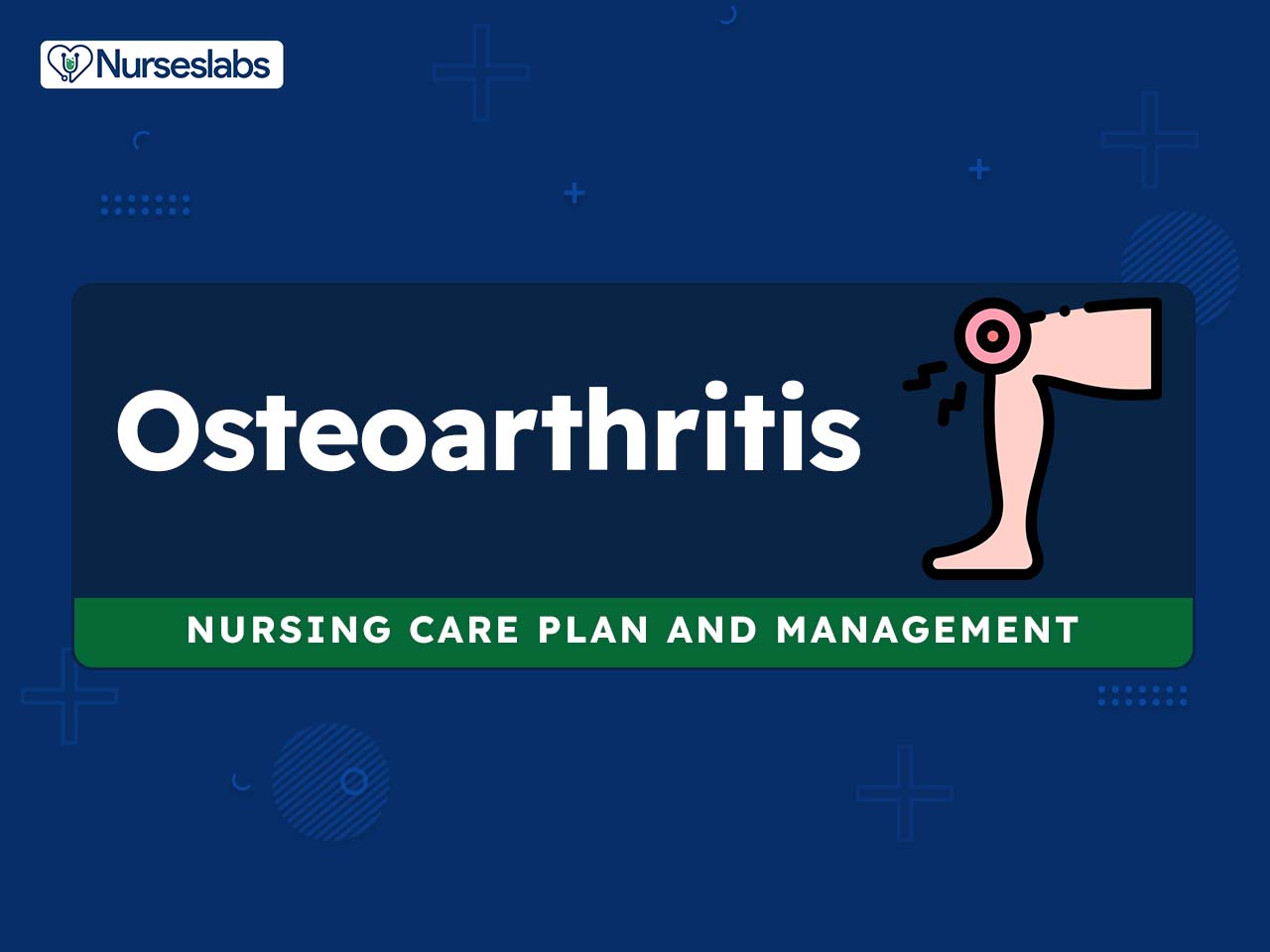

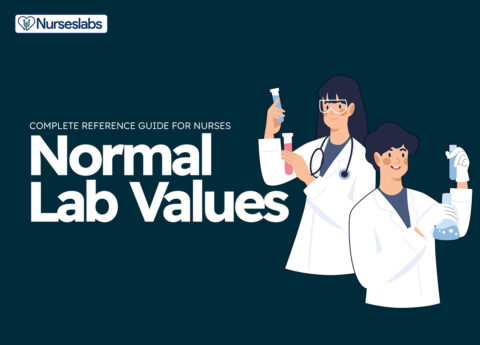


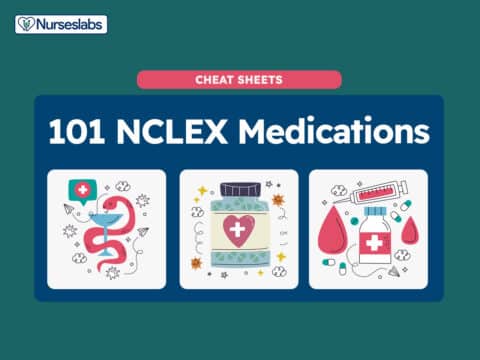




















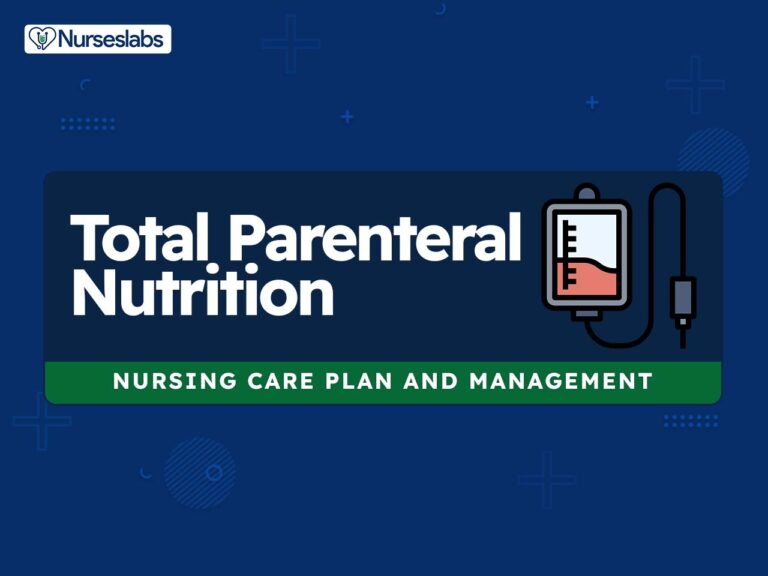

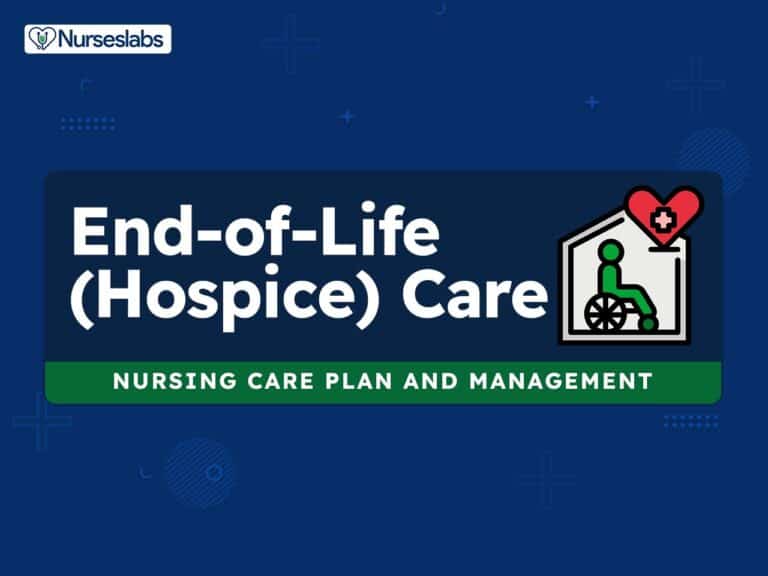
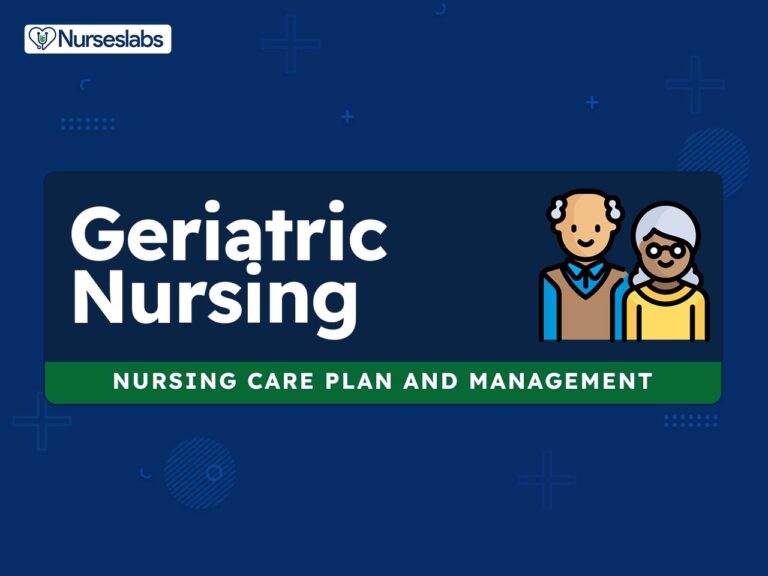

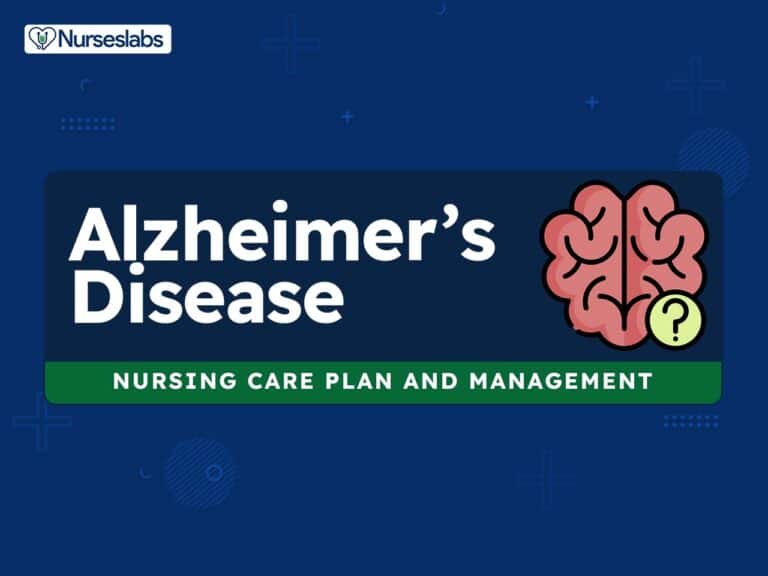
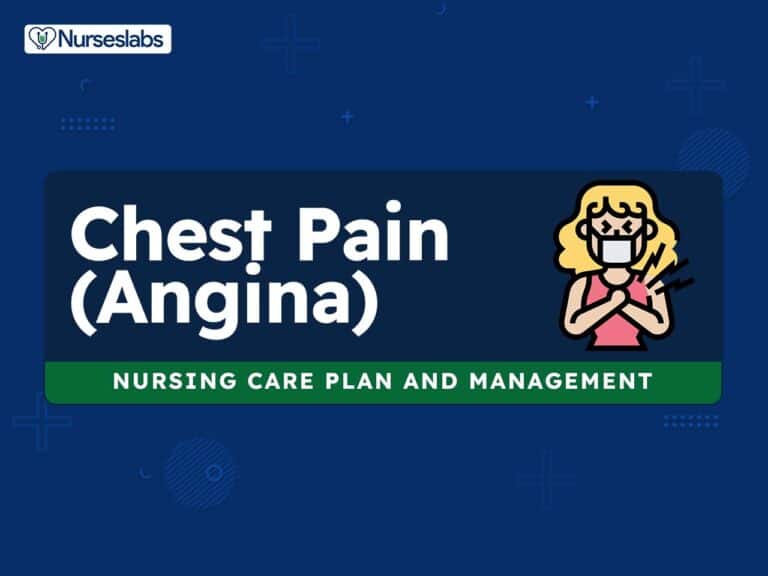
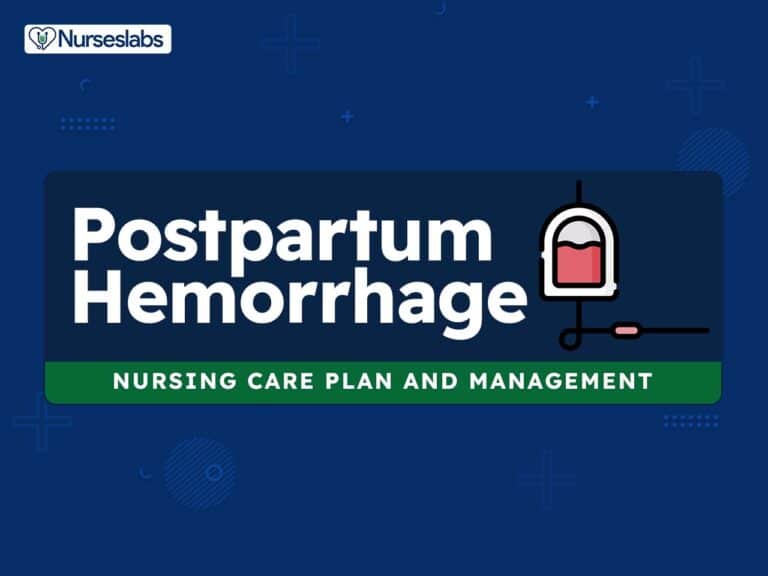
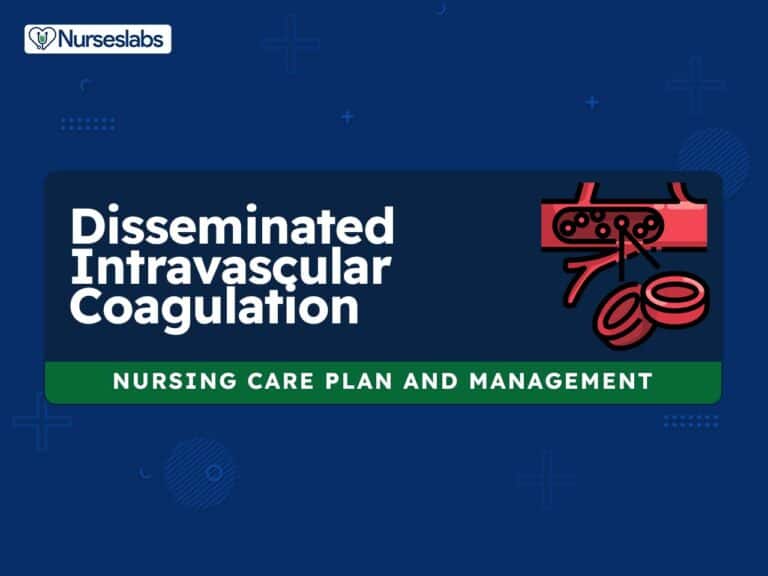


Leave a Comment